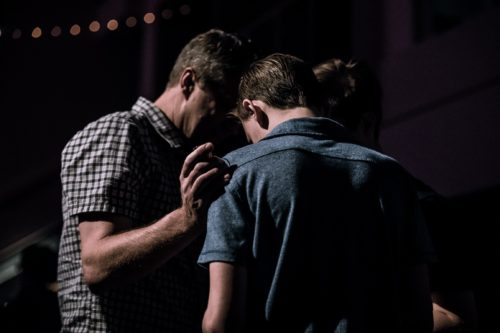Feeling Lonely Hurts & Is Bad For Your Health
Loneliness can make you feel like you’re dying inside. But it’s also been shown to contribute to premature death. Experts are now saying that loneliness is a risk factor as bad as smoking, obesity, or alcohol. Many lonely people increase their risk by trying to self-medicate with smoking, drinking, and overeating, which only compounds the problem.
The loneliness partners feel within the container of a marriage is qualitatively different than other types of loneliness. There’s an added layer of angst a person experiences when they’re starving for connection while in the same room or bed or car with a partner who has chronically withdrawn or shut down. You don’t have to be alone to feel lonely, which is characterized as a sense of abandonment or emptiness.
Marriage Grows Us Up
 Marriages are more like roller-coaster rides than hoverboards, more like cross-country triathlons than quarter-mile sprints. Without the kinship tie of a biological bond or the emotional distance in a friendship, marriage can put us between a rock and a hard place. Few relationships seem to be so perfectly designed to wake us up, shake us down, and grow us up. A long-term, committed relationship—where you and your partner have both feet firmly planted in the process—will challenge your comfortable views of yourself, each other, and often the world around you. Those challenging moments can hurt or leave you disoriented—feeling wrong or wronged, critical or criticized, unwanted or wanting so much more. One or both of you may intuitively try to protect yourselves by disengaging. You’ve heard of fight or flight? When you feel threatened in some way, physically or emotionally, fleeing is a natural response.
Marriages are more like roller-coaster rides than hoverboards, more like cross-country triathlons than quarter-mile sprints. Without the kinship tie of a biological bond or the emotional distance in a friendship, marriage can put us between a rock and a hard place. Few relationships seem to be so perfectly designed to wake us up, shake us down, and grow us up. A long-term, committed relationship—where you and your partner have both feet firmly planted in the process—will challenge your comfortable views of yourself, each other, and often the world around you. Those challenging moments can hurt or leave you disoriented—feeling wrong or wronged, critical or criticized, unwanted or wanting so much more. One or both of you may intuitively try to protect yourselves by disengaging. You’ve heard of fight or flight? When you feel threatened in some way, physically or emotionally, fleeing is a natural response.
However, withdrawing is not the answer. It may seem to ease the pain in the moment, but ultimately, loneliness can be far more damaging—to the relationship and to your mental, emotional, and physical health.
Don’t Withdraw; PAUSE Instead
When you want to feel connected to your partner again, or avoid disconnecting after conflict, tools can help. Try my PAUSE technique.
 P stands for Pause. Stop what you’re doing, internally and externally. Getting or keeping busy when you’re upset is tempting. Busy-ness is distracting and can create an illusion of feeling better. But it only delays the inevitable return of the loneliness. If you can learn to sit with your feelings, pretty soon you’ll discover that they will eventually pass. If you ignore or resist them, they will persist.
P stands for Pause. Stop what you’re doing, internally and externally. Getting or keeping busy when you’re upset is tempting. Busy-ness is distracting and can create an illusion of feeling better. But it only delays the inevitable return of the loneliness. If you can learn to sit with your feelings, pretty soon you’ll discover that they will eventually pass. If you ignore or resist them, they will persist.
A stands for Accept. Accept the situation. Stop resisting it or rejecting it. It’s here. This doesn’t mean you become a doormat and allow hurtful behaviors, just that you accept the reality of your dynamic with your partner rather than reacting to it. You get centered and from a place of calm, look at the situation, including at your part in it. This is related to the first step. But while the feelings will pass, the situation won’t until it’s attended to. And if the situation remains, then the feelings of loneliness, frustration, anger, sadness, or pain will just return.
U stands for Understand your feelings. Take a moment to sense into your emotions. What feeling words resonate for you right now? Look up lists of feeling words and see if you can put a name to what you’re experiencing. Try to describe the sensations in your body. Is your jaw or abdomen tight? Do you have an aching sensation in your chest? Or a hollow feeling in your belly? These are clues to the emotions you may be experiencing.

S stands for See your partner’s perspective. Put yourself in his or her shoes. Imagining how your partner might be feeling or thinking is an exercise in empathy. Once you can see beyond your own hurt feelings, your discussion with your partner can become more respectful, caring, and productive. Ask upper partner how they feel and listen to their response with less defensiveness.
E stands for Express your feelings. State, as simply as possible, how you feel. If you give your partner time to express their feelings and take in your validation of where they are and why, they’ll naturally be much more open and able to hear how you’re feeling, too, and return the validation and empathy you demonstrated towards them.
Familiarize yourself with the Imago Dialogue and consider using it with your partner to express each step of your PAUSE.

If you struggle with learning how to apply the Imago Dialogue, or if it doesn’t seem to help, it may be time to reach out for professional support. Take a deep breath and PAUSE. It could improve your marriage and your health, as well as help you feel more connected and less lonely.








